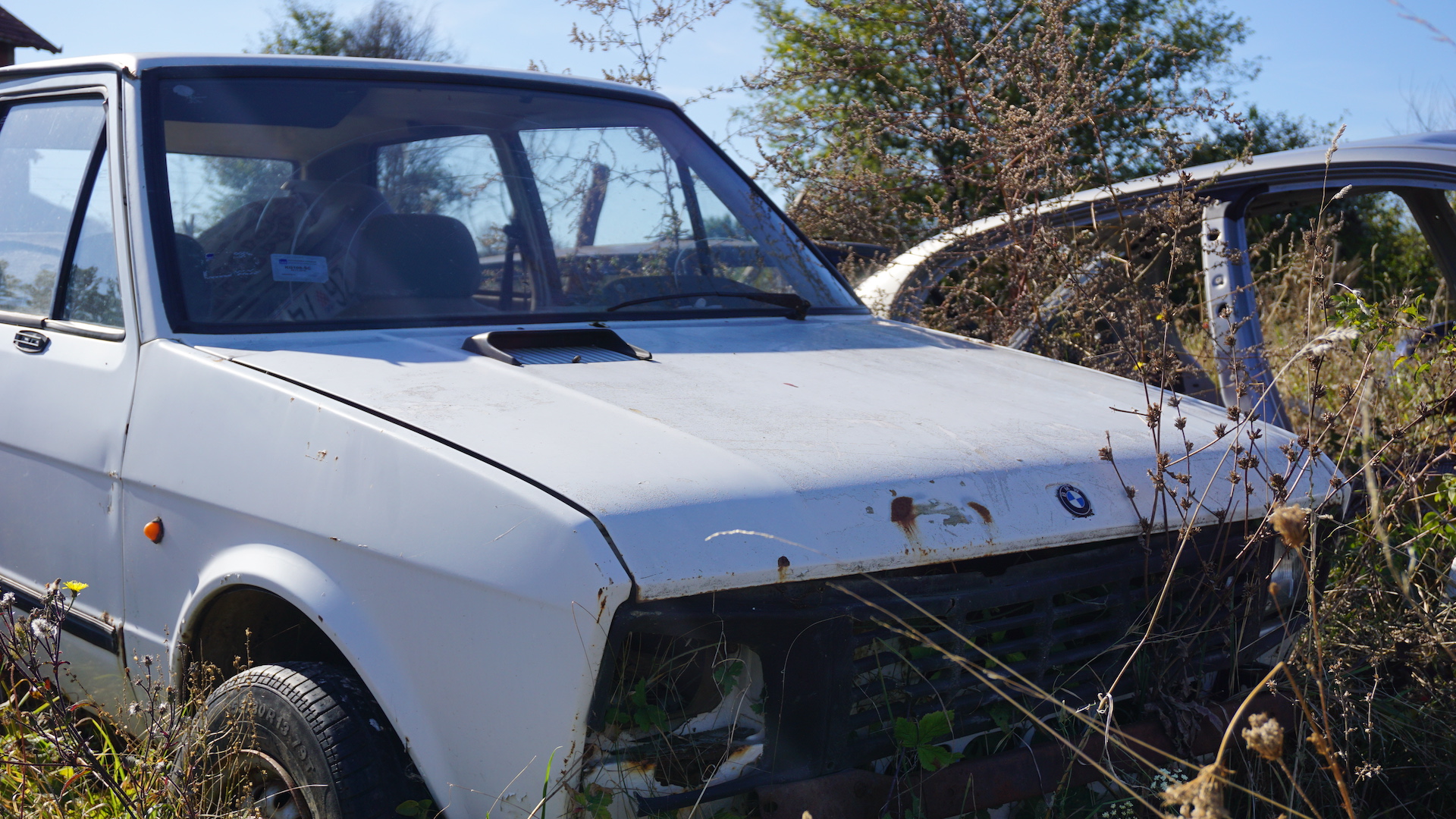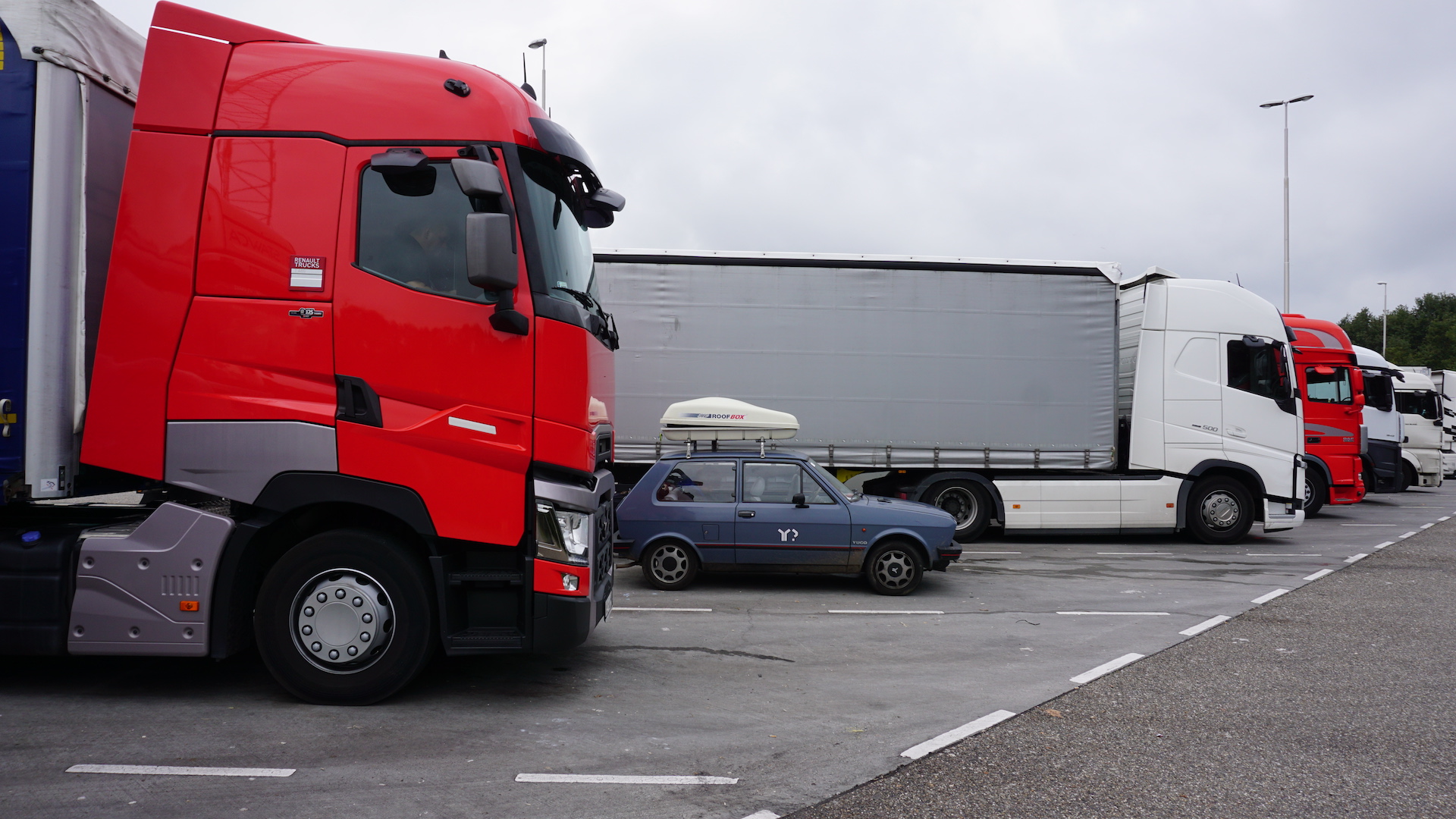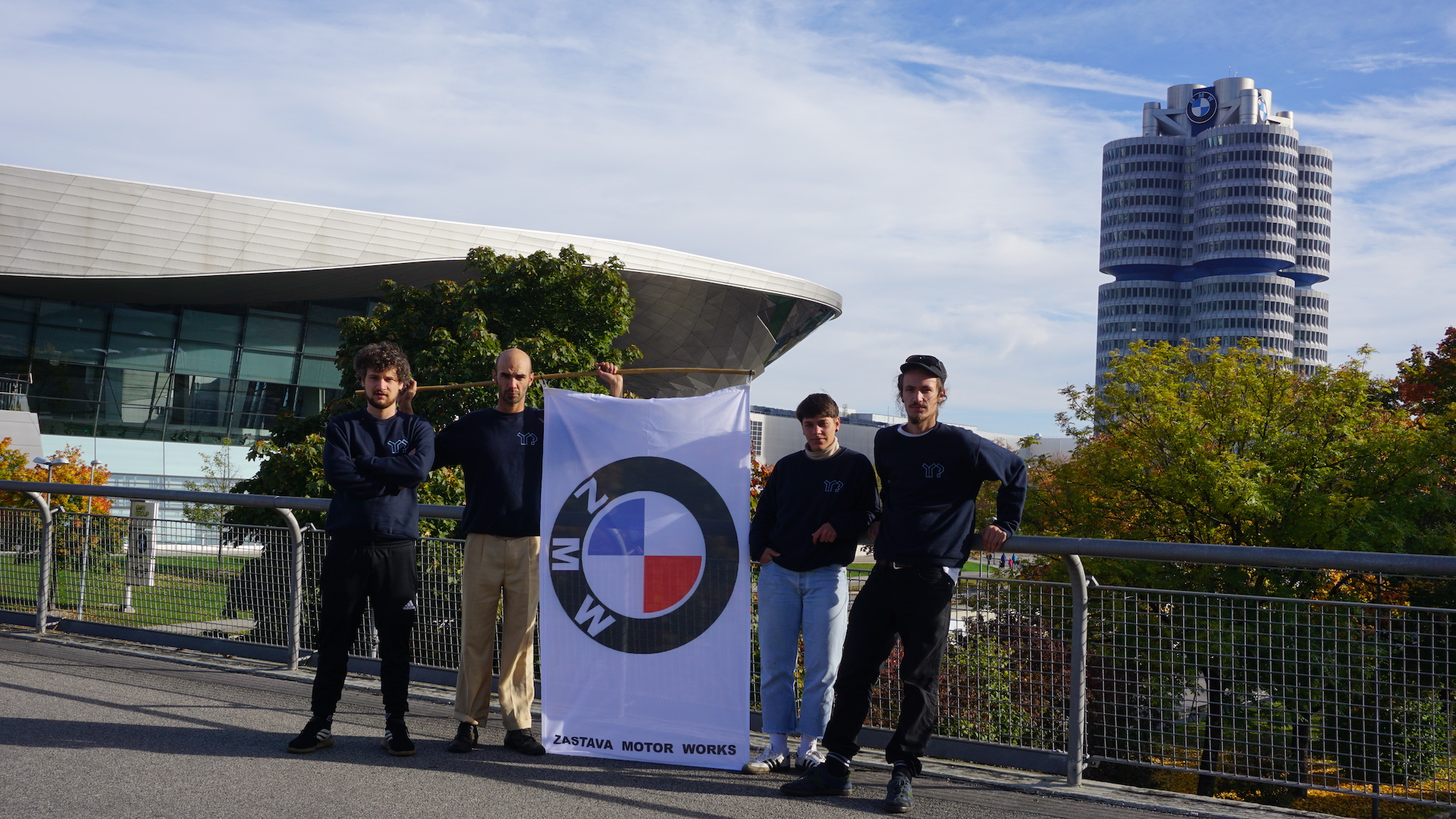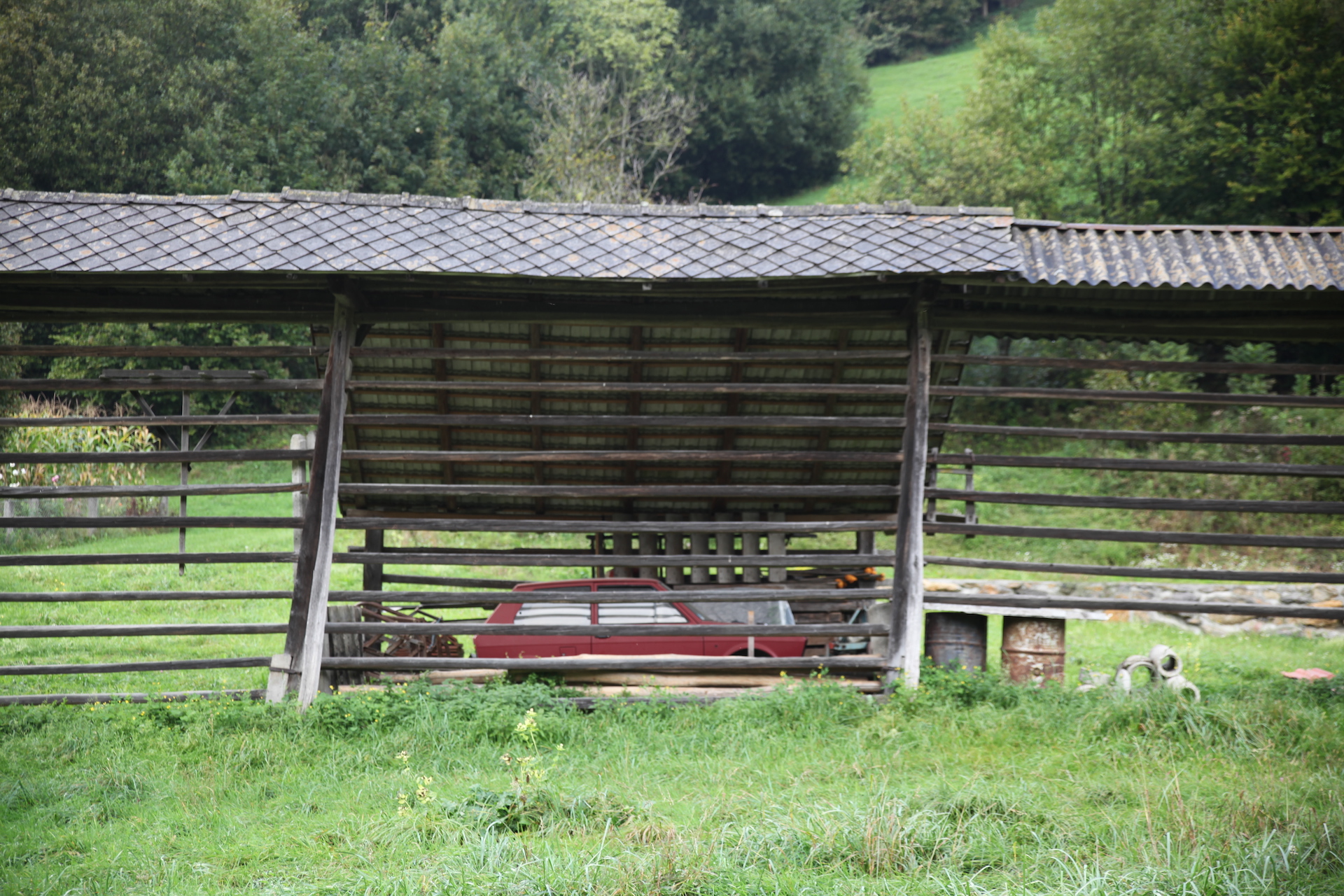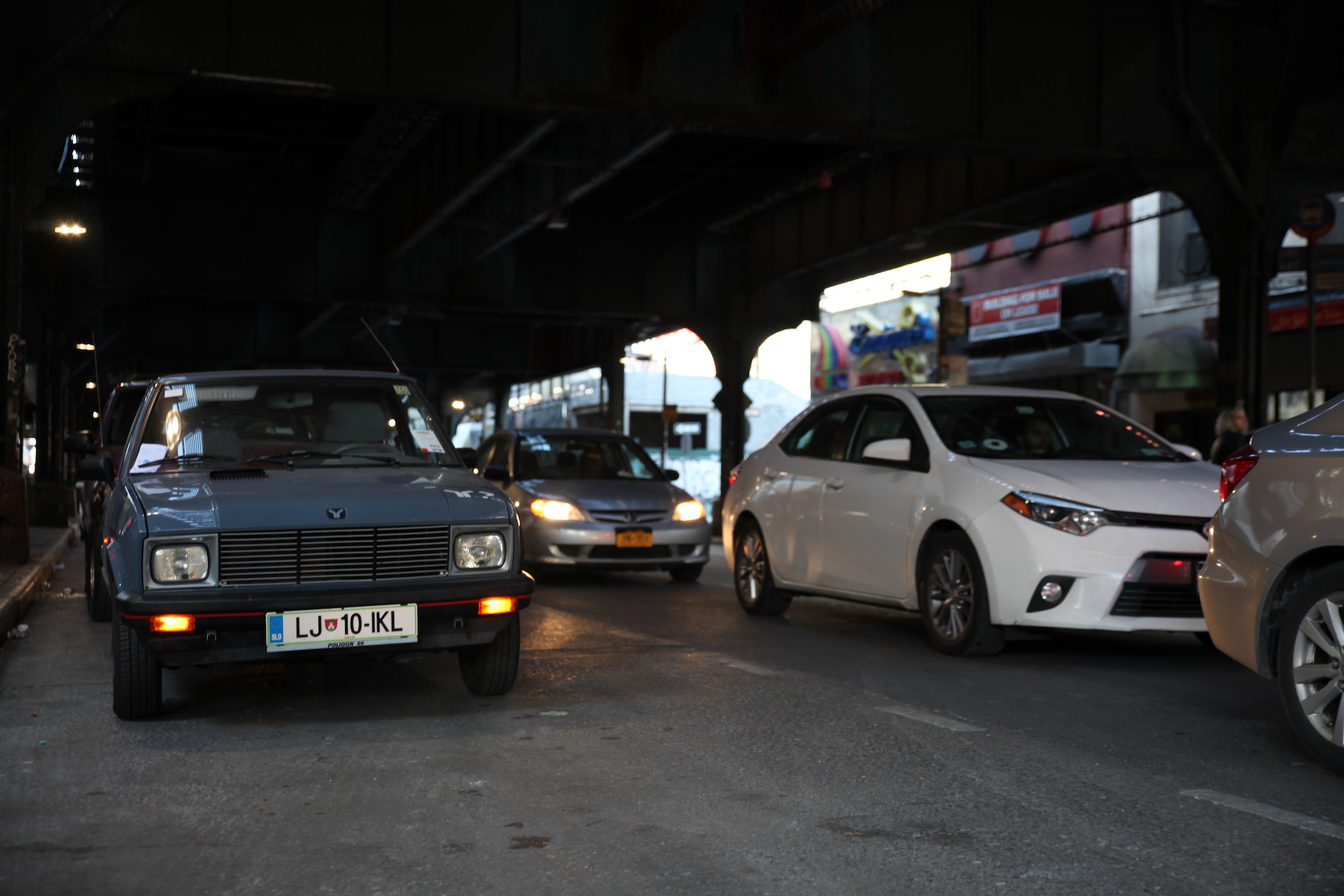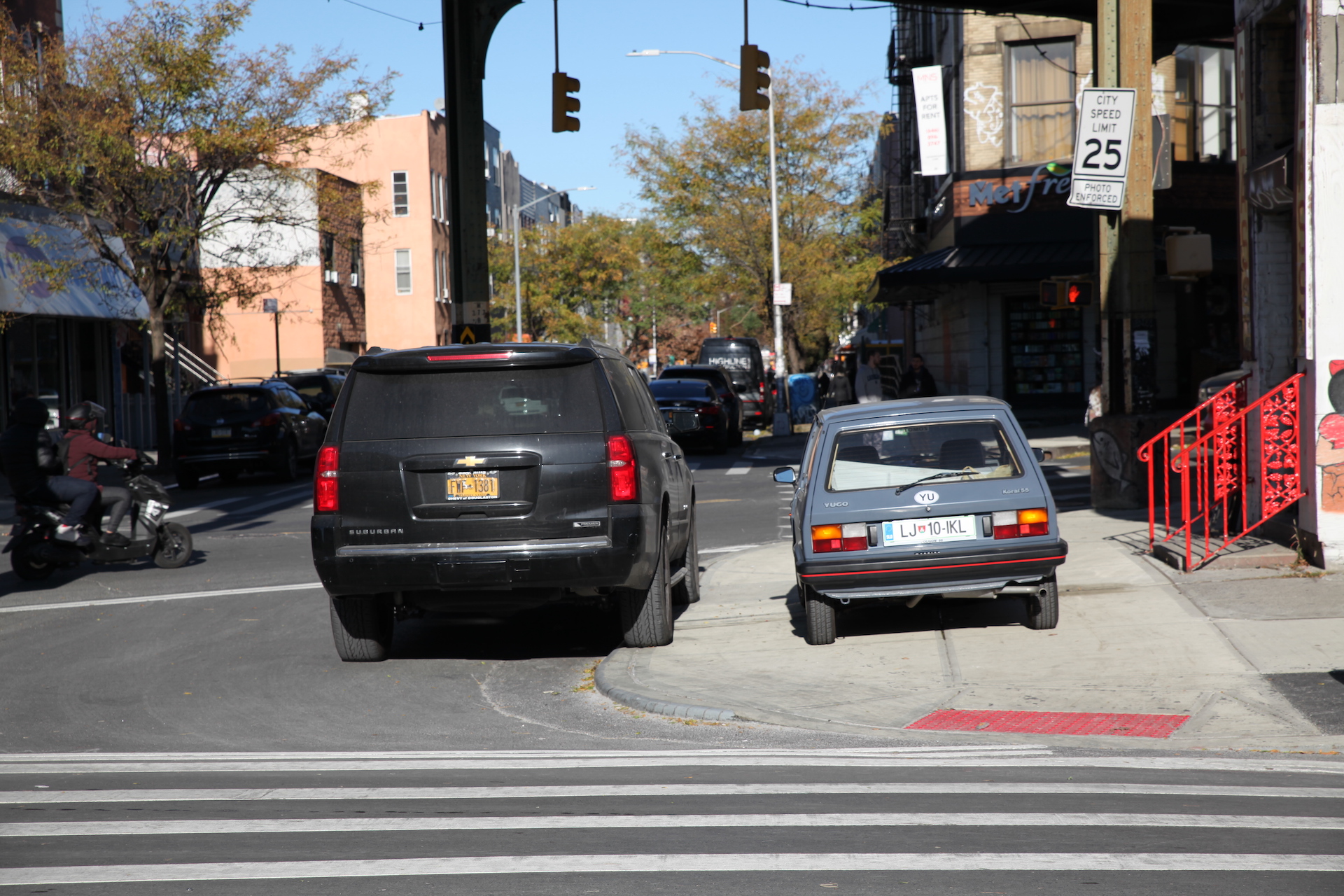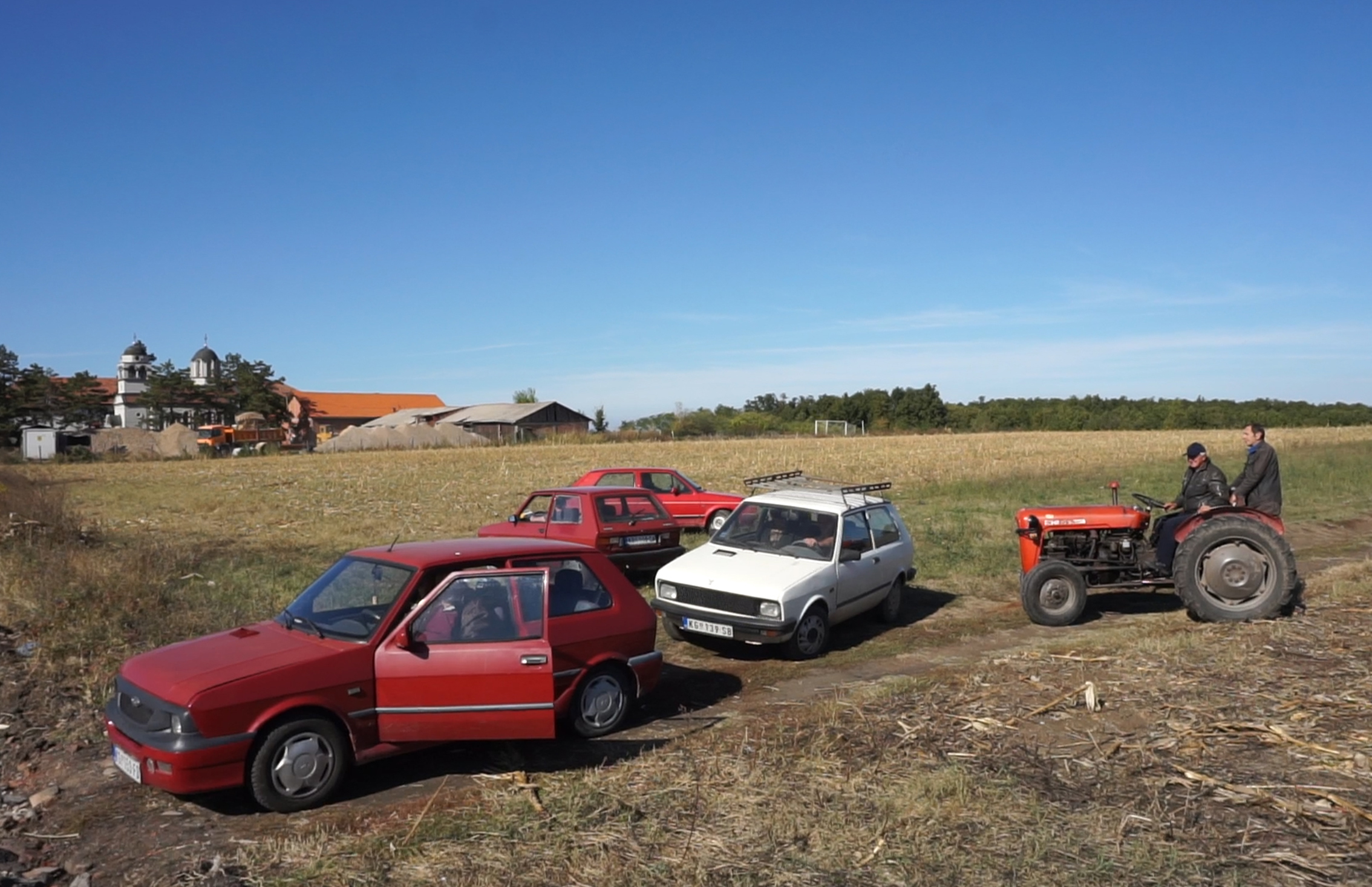Yugo was the studio – an interview with the members of Y? project, Toni Poljanec, Danilo Milovanović, Neža Knez, Luka Erdani.
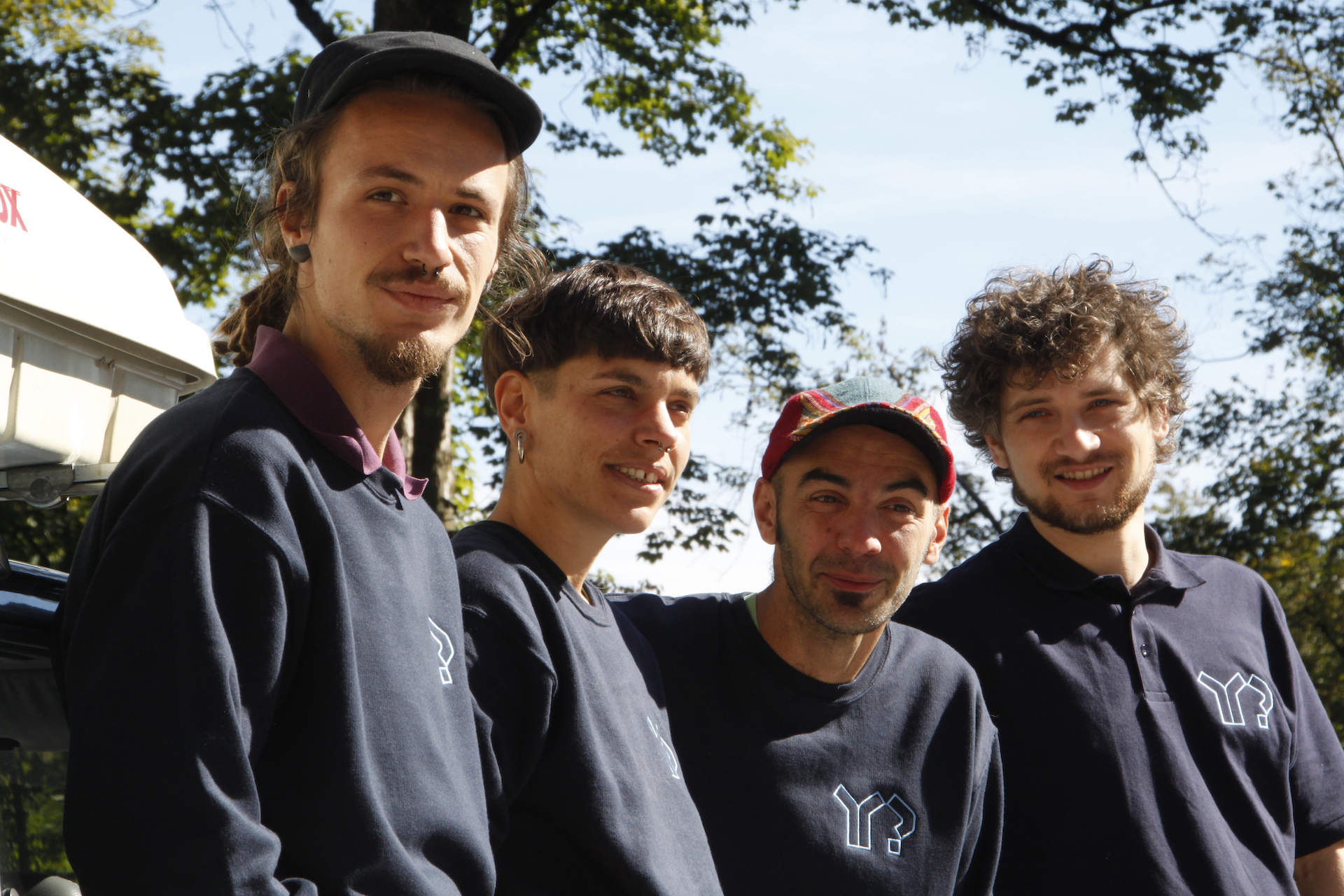
Y? is a project based on the artistic research of a historical connection between the USA and former Yugoslavia. The main protagonist of this project is the Yugo, also marketed as the Zastava Koral and Yugo Koral, a subcompact car hatchback formerly manufactured by Zastava Automobiles, at the time a Yugoslav corporation. In the course of 2019, almost 40 years after the first Yugo car rolled out of the factory, and 10 years after its production definitely stopped, the members of Y? project re-enacted this symbolically loaded story by making the trip themselves from the Kragujevac factory in nowadays Serbia to the United States – the four of them travelling together in a Yugo.
Easttopics: When exactly did your adventurous journey take place?
Y? project: We started on the 6th of October, 2019. At this time we were in Slovenia, yet without the Yugo. It took us one and a half month to complete the trip and we came back from the United States on the 21st of November, 2019.
Easttopics: How did you originally meet and decide to realise this project?
Y? project: The genesis of this story dates back to February 2019 in Švicarija, where Danilo and Neža were living. Beforehand, one of our friends had bought a Yugo which Neža drove a few times. It was a very pleasant experience and evoked many memories, as a lot of people had such a car back when we were all kids. After this, Neža spent some time in New York in the framework of a residency program. There, she befriended many ex-Yugoslavs so this experience came up again and again, along with the idea to take a Yugo to America, as a lot of people offered to help in the process. After that Toni, Danilo and Luka joined the project, we applied to the Ministry of Culture from which we received a small grant, but it was not enough to get started. Fortunately, we also received a larger support of i-Portunus, the mobility grant for artists which provided us with some funds for self-organised residencies in multiple European countries. We also decided to use all the connections we had all over Europe, both professional and private ones. This is what actually made the project possible. We travelled from country to country with the Yugo, making interventions and building the project as we went. Our journey took the form of a very grass root initiative.
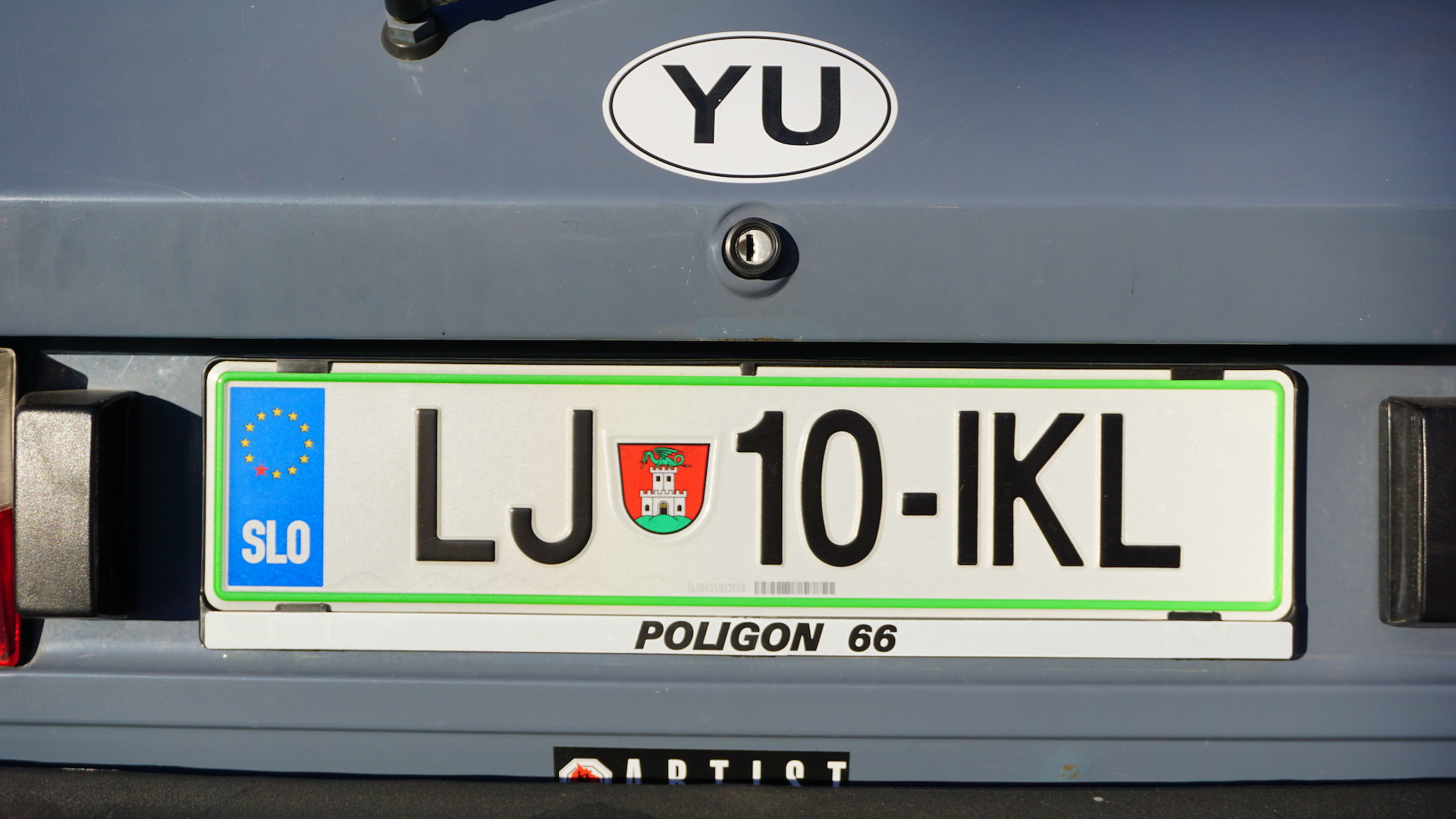
Easttopics: What is the theoretical background of Project Y??
Y? project: The background of the project is the symbol of the Yugo. This car was very important back then, not only for Yugoslavia itself but as an export product. At the beginning though, we had no idea about a lot of things, so the research phase was essential: we collected materials and looked for witnesses of the car’s history. Week after week, the seemingly simple project that we initially imagined raised a lot of questions.
There is a book called The Yugo: The rise and fall of the worst car in history written by Jason Vuic whom we were in touch with via e-mail. It was very informative for us to understand how the Yugo car was perceived in the US, how basically its exportation to the States made two politically opposed worlds collide yet collaborate. The fact that the capitalist United States was importing this car made in Socialist Yugoslavia and building a business out of it is in itself quite burlesque. So the story of the Yugo was very heavily politicised. At the same time it’s also full of human content through the identification of common people around the Yugo car. We were truly inspired to keep this dual position and both views, one from ex-Yugoslavia and one from the West, and also a symbol of everyday life for millions of people while also bearing a strong international political message.
Easttopics: How did you plan your trip and how did you succeed in doing so in such a short timeframe?
Y? project: We had to plan our different stops along the way, what to do in these places, and how to get to England. In parallel, we were looking to find people who are somehow connected to the Yugo. In any possible way. In a philosophical or artistic way, as former workers, factory directors, engineers, designers or simply as Yugo fans. We operated on different tracks simultaneously. Most people wouldn’t have jumped into a project of this complexity with just the idea alone, that is usually not enough. But our curiosity to see how it is possible to make something out of nothing was stronger.
The Yugo has a historical aspect that allows you to look at it in several ways. It can be just a car, it can be a gift from the past, it can be politically incorrect or even subversive. When we parked the Yugo on the main square in Zagreb, passers-by were like “what is this car?”, in Serbia they were more enthusiastic as it reminded them of the “good old times”. In England or in New York, we experienced a huge plurality of attitudes that we found very interesting. Another exciting part was to import the car without having a new owner in the US yet, because our original idea was to sell it there in the frame of an auction. The more we worked on it, the more it seemed kind of impossible to do so. That is how we tried to find a buyer on our way. We were only one week away from the British port where we had to hand over our Yugo to the authorities, so we needed to find that buyer urgently. If you want to import something in the USA without a buyer, then it’s just trash, but if you have a buyer, then it’s business already. Luckily, the editor of a classic car magazine in New York heard about our project and he recommended us to contact one of his friends, an enthusiast of Yugos living in Pennsylvania who already had one, so ours became his second car. The transaction happened just one week before we had to embark it on the ship, but that was enough for us to have the necessary import documentation ready on time.
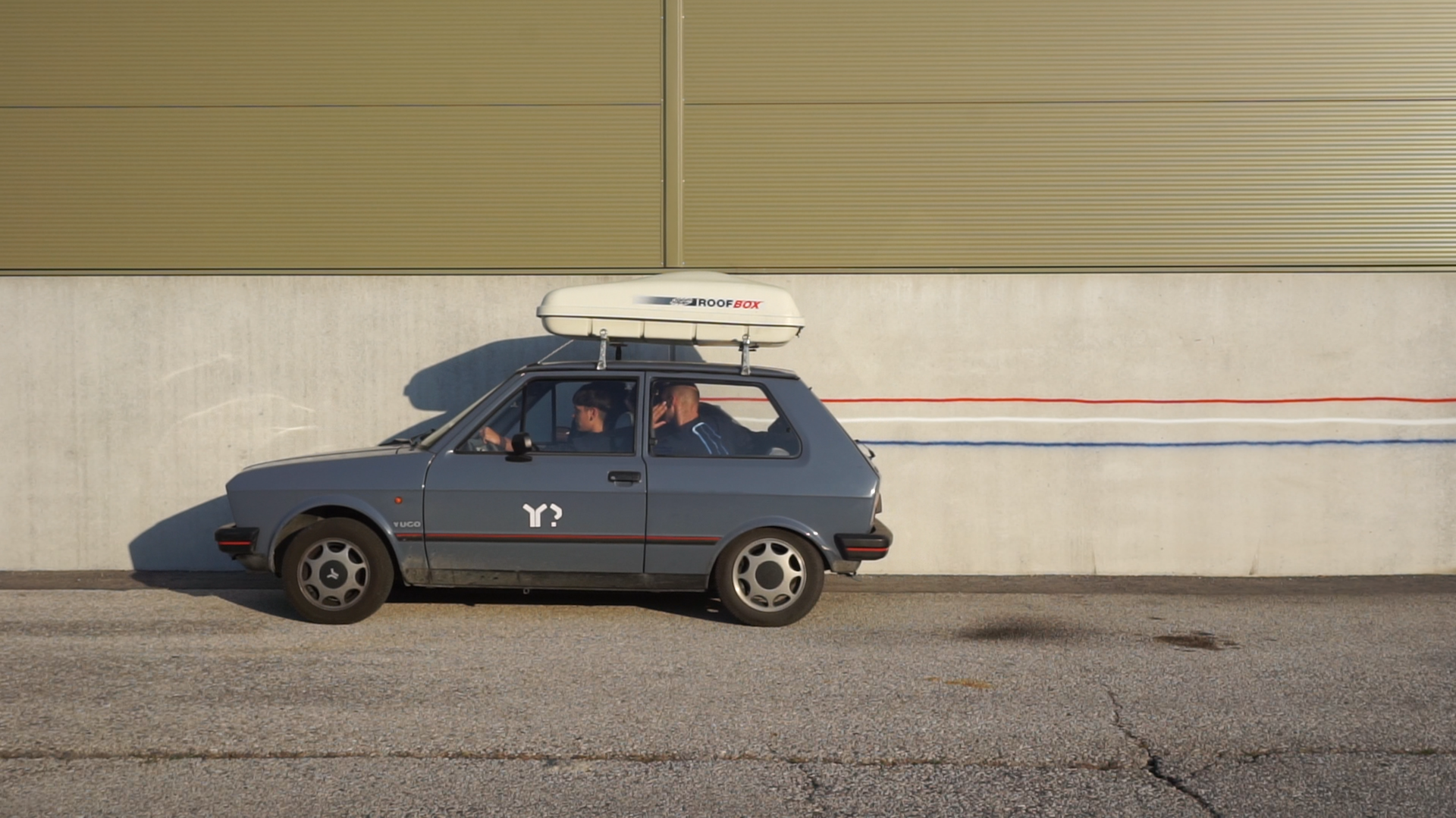
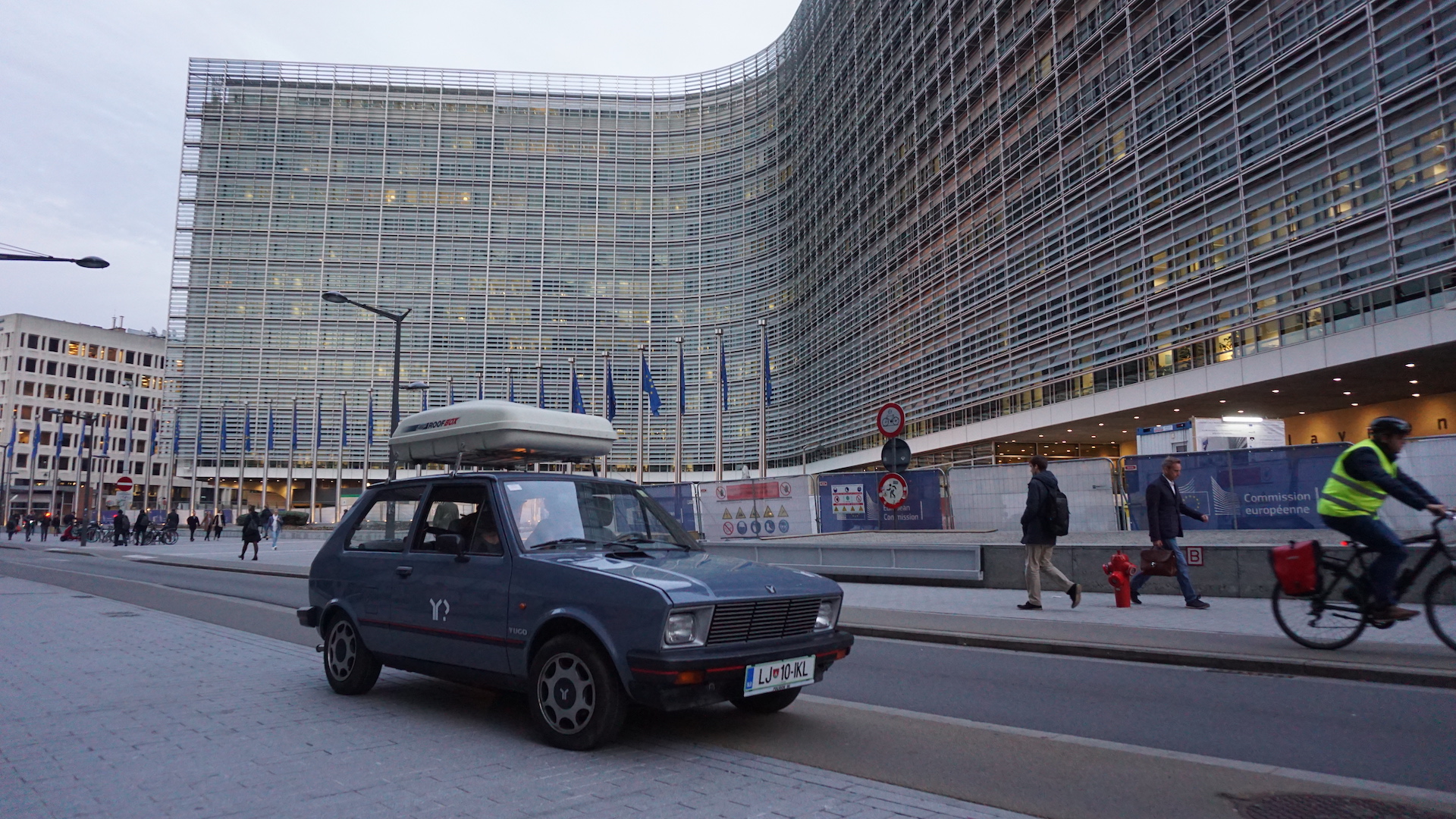
Easttopics: Did you take the plane to the States or did you also go on the ship?
Y? project: We travelled by plane. Initially we wanted to go with the Yugo on board but couldn’t succeed.
Easttopics: You mentioned meeting factory workers, engineers, designers. How did you find these persons?
Y? project: When we arrived at the city of Kragujevac, the centre of production of the Yugo car in Yugoslavia, we only had one contact who sadly was in hospital at the time so we could not meet. But fortunately, as the factory was employing a large part of the inhabitants back then, almost every second or third person in the city had some connection with the factory. We were also lucky to meet with a person who knew the former directors of the factory. We managed to meet three or four of them, and a couple of workers as well. After that we just got acquainted with a lady working in the restaurant where we stopped for lunch. It turned out she was the last female worker from the factory, the last one to leave the factory before it completely collapsed. We made an interview with her, and in the end, stayed five days in the city, instead of two. In the States, we also met Tony Ciminera who was vice president of the Yugo America company and Kevin O’Callaghan who organized the Yugo Next exhibition in 1995 at the Grand Central Terminal in New York.
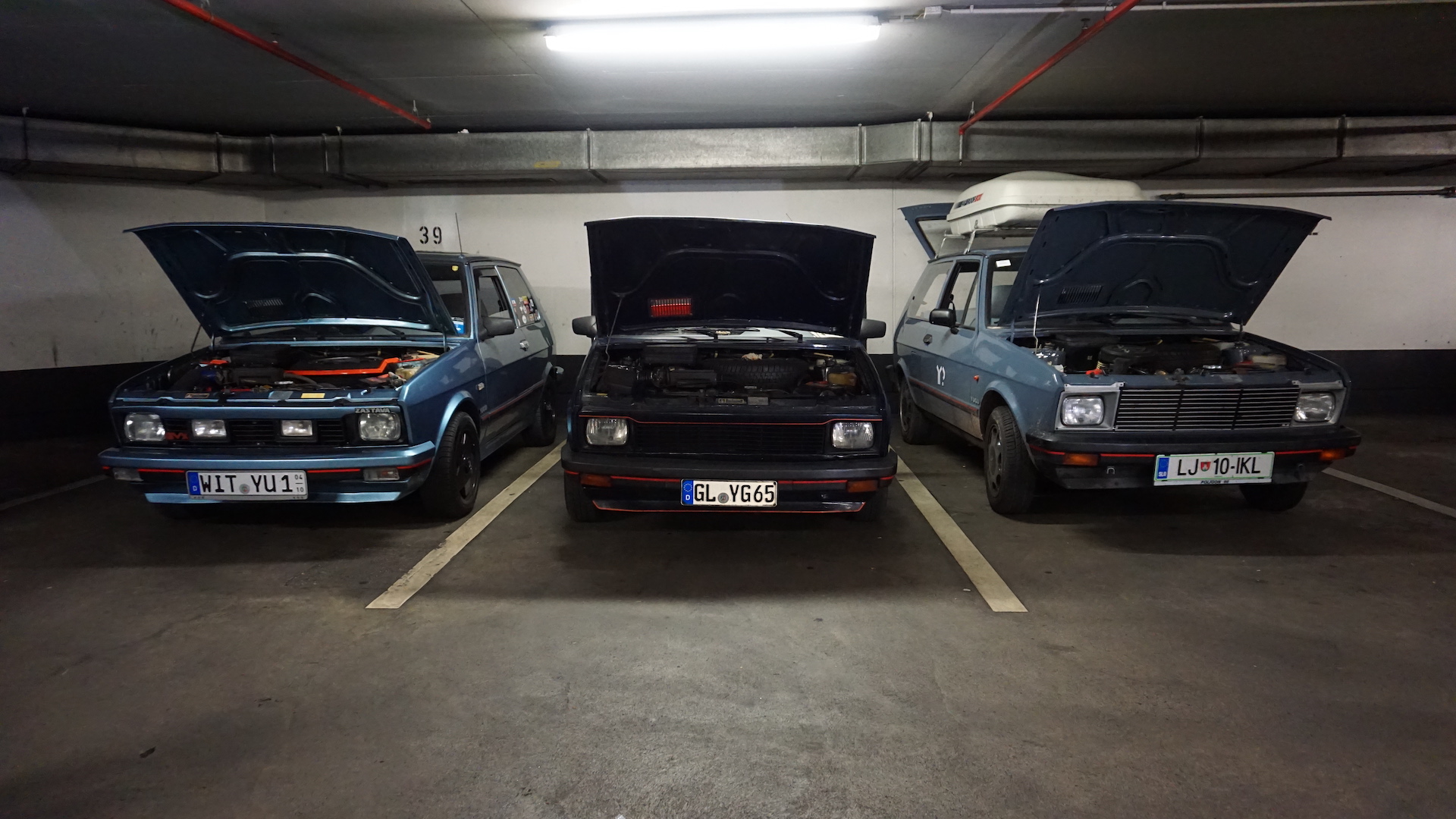
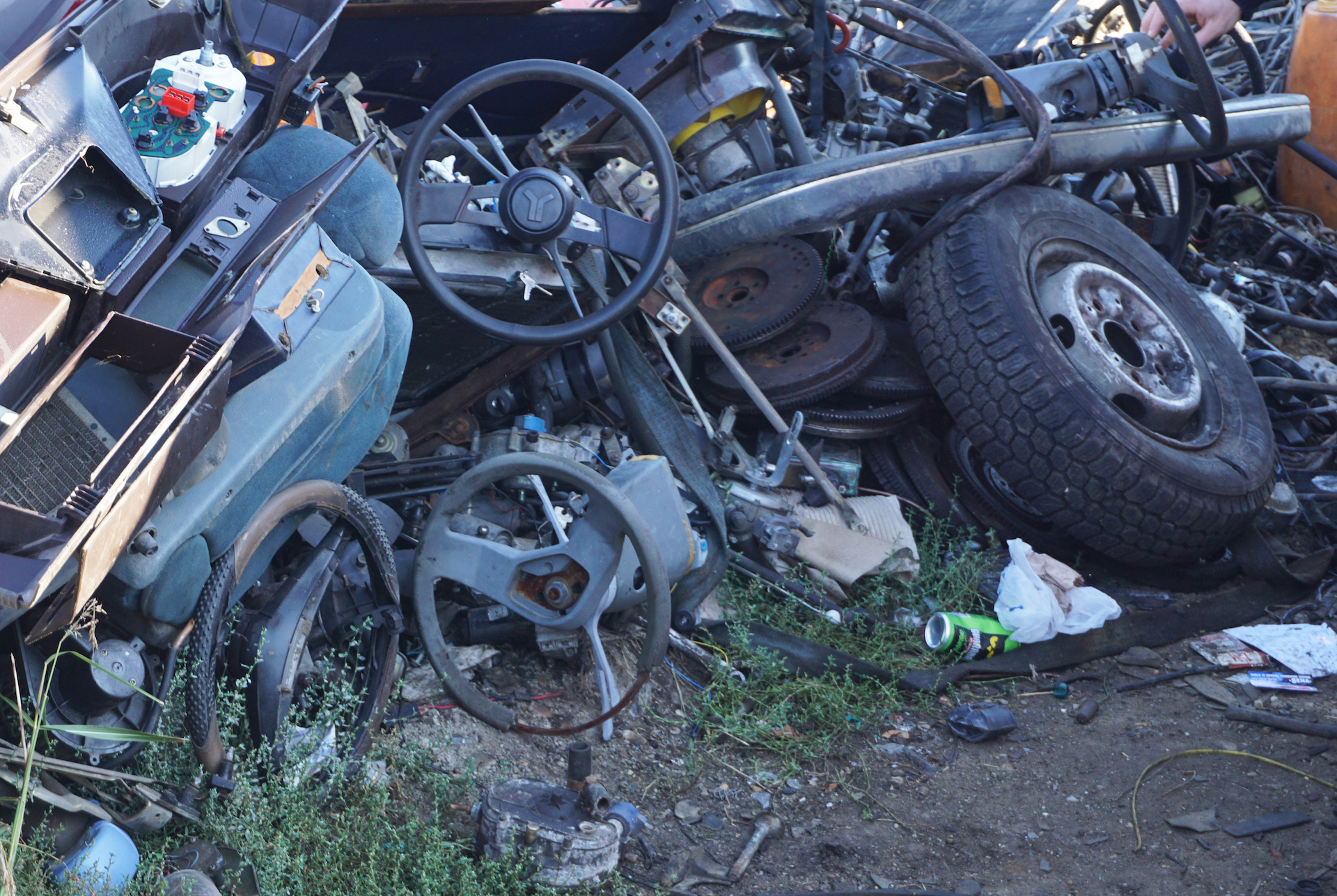
Easttopics: How many cities did you include in your research?
Y? project: We stopped in 19 different cities. We drew the map of the trip in advance, and did the research mostly online. Then we wrote to people asking if we could meet them on a given day in a given city. In the first days we kept reaching out via email, reading books and gathering material. When the trip started, we just let it happen, exploring on the way and searching for new contacts in the places we stopped. There might be something inaccessible online, but people who live there know. You always get the best information from the spot itself. We were really open, but had a very tight schedule. We were four of us with these Yugo sweaters, this car, these small cameras. We did not have any kind of status and everybody was just welcoming us.
In general, people saw us as a group of hippies taking a trip just for having fun, but many of them also took our research very seriously. We did not want to sound like specialists of the subject though, we were curious artist asking questions and learning along the journey. That is how we entitled the project WHY? – or Y? in short –, finding responses and discovering facts with our movie.
Easttopics: You mentioned interventions that you performed along the way. How did that happen?
Y? project: We had a few ones in mind and prepared the material for them beforehand, like for sticking a red star on one European yellow star of the country plate each time we crossed a border. It looks super simple, but if you want to reach all of them it could be challenging. Sometimes, we could not stop because we were on the highway. At other times, we entered a new country without seeing the “Welcome in the European Union” plate, so we looked for another border, just to find the plate.
We also made spontaneous interventions during the trip, in reaction to a specific situation. For example, the shipping company notified us that the car has to be clean before going on the boat. We were in Brussels at that moment so we decided to stop in front of the parliament, cut out the form of a star from a large sponge, and clean the Yugo with it. Cleaning a symbol of Socialist Yugoslavia with a five pointed star-shaped sponge that would get dirty in return, all this in front of an emblematic place of the European Union, that had a lot of connotations.
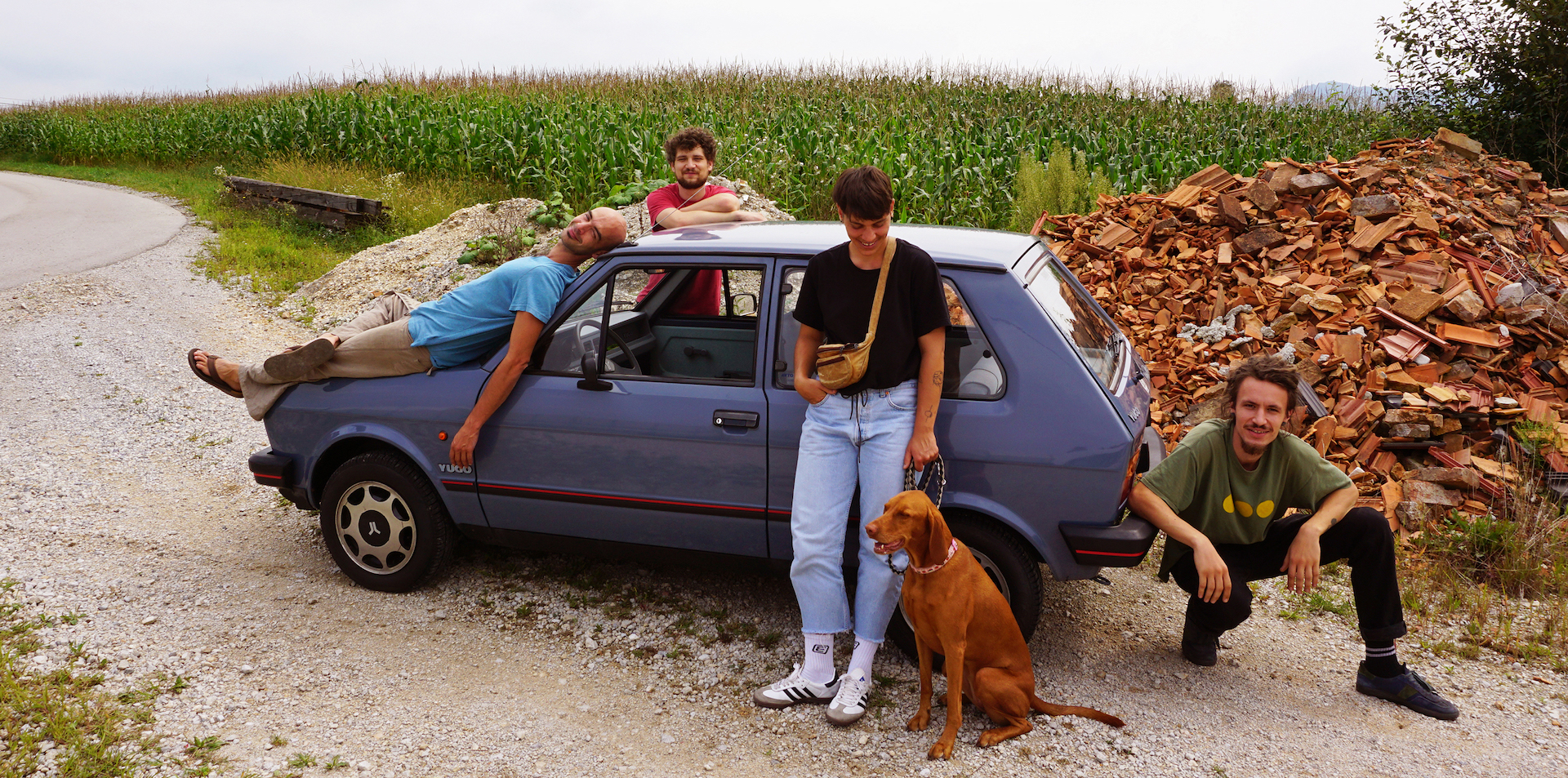
Easttopics: Is there anything that you would describe as like your worst memory in the project?
Y? project: The worst experience we had was in the States. We had a pop-up exhibition in New York where our plan was to show the Yugo as well. It was very intense because we would not get the car on time for it from customs as one paper was missing and we needed to build the exhibition, finalise the subtitle of one video while trying to get the administration in order. We also did an action with an American flag that was slightly modified, with a red star. That was tense, I let you imagine the reactions…
Easttopics: If you would need to define this project Yugo, the project Y, what term would you use? Is it a performative video?
Y? project:: An artistic, historical research maybe.
A performance too.
And an open platform as well.
We always think of this project as a non-site-specific, transitory work but linked to specific situations. If we would try to do something similar now that we have already been in all these different situations, it would not reflect the same thing.
Easttopics: So we can say it is a situation specific mobile research project.
Y? project: Yes, in one sentence. Comparing us with some filmmakers does not work, we were very into it but without any professional equipment, just small cameras for personal use. In the end it actually was an advantage because we didn’t scare people with big lights, large cameras and microphones. It allowed the conversations to be much more spontaneous than in formal interviews, for example.
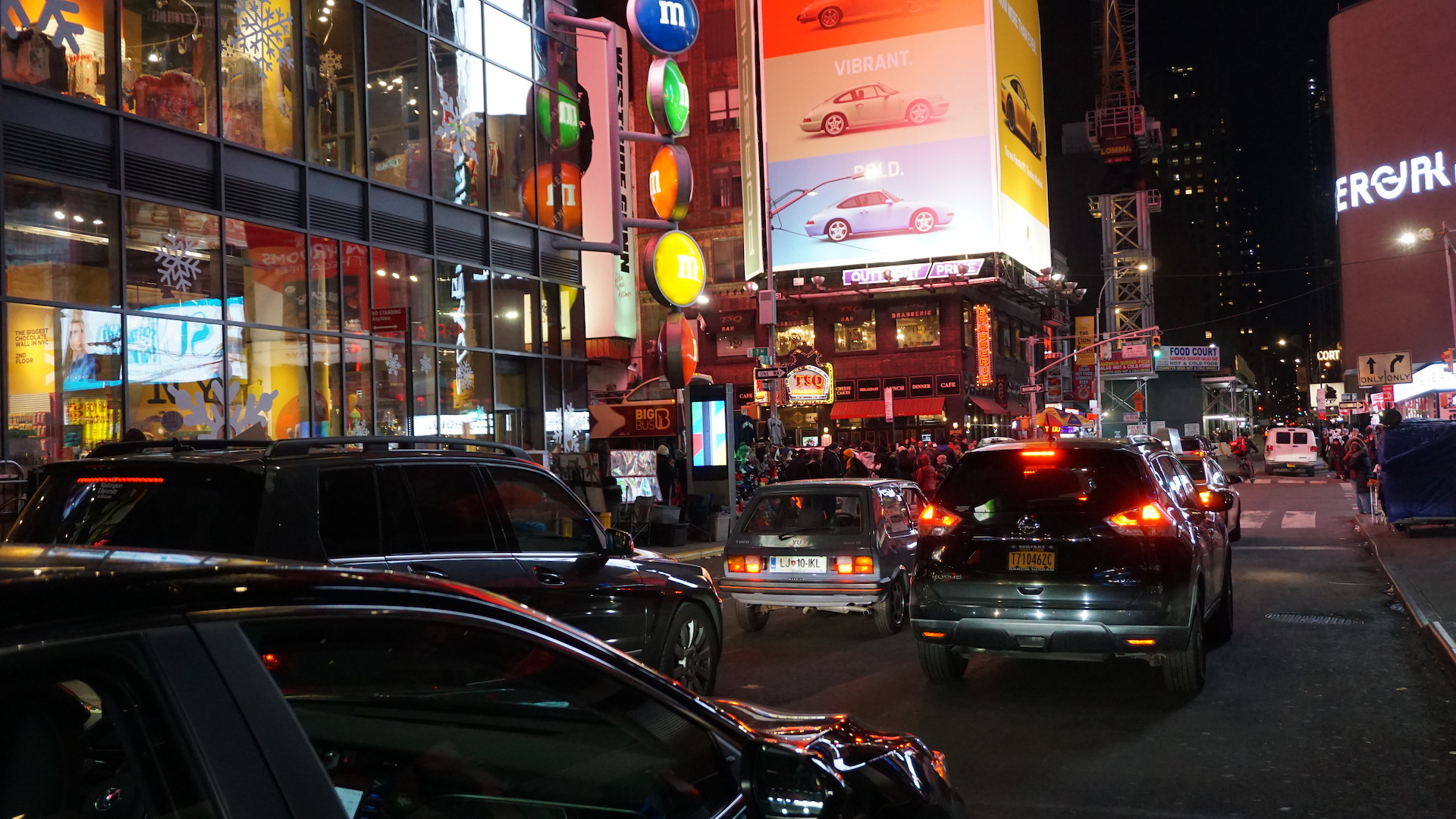
Easttopics: How would an exhibition presenting the project look like? What would you show beside the film?
Y? project: The exhibition would be a combination of the objects we used in our interventions: the star mentioned in Brussels, the flag, a series of photos, some parts of the car. We have the original keys and some documents. These will be accompanied by videos and photos.
Easttopics: It has been almost two years that you undertook this journey. How do you see the afterlife of the project? Are you planning to transform the project into an online platform where you could map the places you have been to, add people that you met along the way or still today?
Y? project: No, this would be another project and we already did this to some extent through social media platforms during and after the trip. In a way, making a curatorial platform would be a challenge that would require much more time and resources, I think. That was always a question: should we expand the exhibition, the project or should we keep it simple such as the project is. We are keeping our digital presence, but I don’t think we have ever thought of making it as a platform. On the other hand, we would really want to produce a catalogue because the materials we gathered constitute precious sources of information and we would love to include essays from Jonson Vuic in America, and Branislav Dimitrijević in Serbia. These would be two great articles from two different countries and viewpoints. Of course we said a lot with an exhibition and a movie, but a book would give a new dimension to Project Y?.
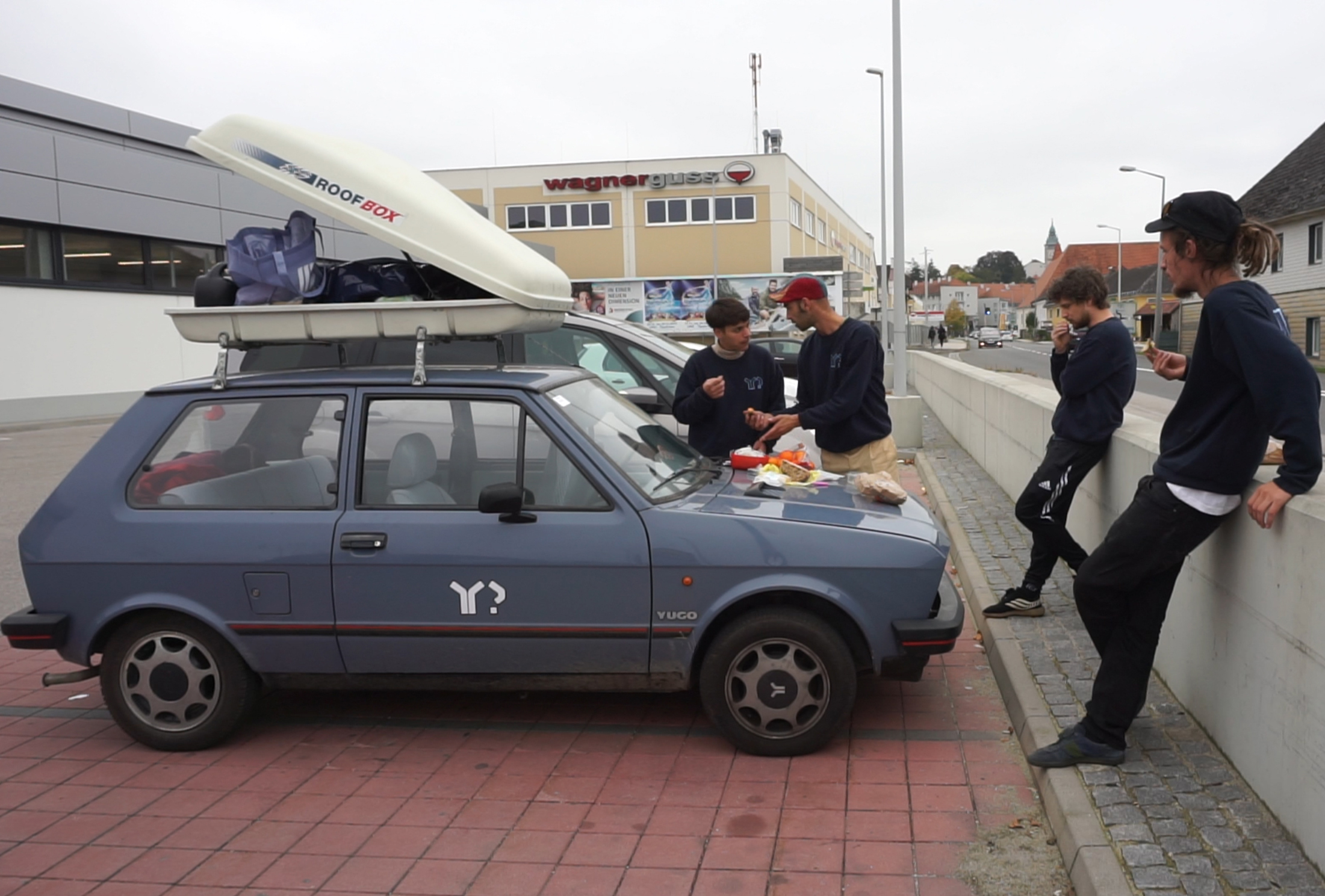
All photos: Y? project archive

